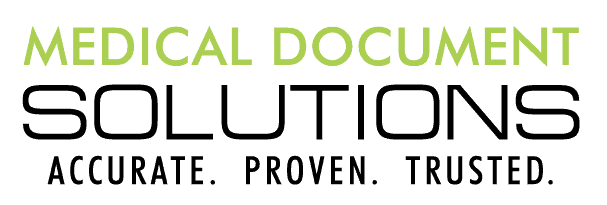Study after study has confirmed it: American physicians are suffering from extreme dissatisfaction with their work – to the point many say they are considering leaving the medical profession altogether.
As noted in the 2018 Medscape National Physician Burnout and Depression Survey, 42 percent of more than 15,000 respondents reported feeling “burned out.”1 But this is an issue that affects more than a healthcare organization’s provider retention rates. A recent JAMA study found a strong correlation between burnout and patient safety issues, with weary providers two times more likely to act unprofessionally and make less than optimal decisions regarding patient care.2
While there are several reasons why today’s providers may be experiencing fatigue and discontent, there is one factor that keeps showing up in related surveys – frustrations using electronic health records (EHRs).
Alexia Gillen, DO, a family medicine provider and ambulatory medical information officer at Regional Health in Rapid City, South Dakota, said one EHR-related aggravation for providers is a lack of consistent, accurate data within the EHR system. “If a provider doesn’t have accurate data in a patient’s chart, they really have to struggle to be able to give accurate and appropriate care,” she explained. “It slows us down. It sets us up where we are more likely to repeat tests. And it increases the risk for error.”
A data disconnect
As healthcare organizations adopt and replace EHRs across the country, they are relying on electronic migration methods to pull and push data to where it’s needed. But it’s critical to ensure that the data is captured in such a way that providers can not only access it – but use it to make smart clinical decisions. Jonathan French, Senior Director of Health Information Systems for Quality and Patient Safety Initiatives at HIMSS, said that, too often, data simply isn’t ported to where it needs to be.
“If the EHR is not properly configured or if the provider does not leverage structured data fields during the patient encounter, data accuracy is impacted,” he said. “Inaccurate data can lead to redundant testing and potential threats to patient safety.”
Gillen added that it also leads to a lack of trust in the EHR system. When the system is populated with inaccurate data – or accurate data shows up in unexpected places – it makes it that much harder for providers to do their jobs, contributing to burnout.
“If providers have to spend their time data mining, looking through different records, trying to find what should have been extracted and put in the right place beforehand, it increases the time of visit with the patient,” she said. “But it’s not just more work during the patient encounter. When data isn’t migrated over correctly, it also increases the work providers need to do outside business hours. Providers end up staying late cleaning up charts to prepare for appointments the next business day.”
That lack of quality data also influences how patients view their encounters with doctors.
“Patients don’t want to sit there while you are searching for something in the EHR,” she said. “And if a provider misses something because the data isn’t accurate, it could lead to a repeated test or the wrong treatment.”
Getting data to where it needs to be
French said that poor data quality damages a provider’s faith and confidence in the EHR system. But having a trusted partner with specialized expertise to help with discrete data migration and mining can help to improve data accuracy.
“Third-party clinical abstractors can play an important role in improving data quality for healthcare organizations,” he said. “When working with information technology and clinical teams on EHR implementation and workflow improvement, a clinical abstraction service can provide insight into the most effective way to design interfaces and workflow so critical data elements are captured to ensure data accuracy. After implementation, they can also help alleviate the time and human capital burden associated with internal staff being overwhelmed by manual chart abstraction and review.”
By doing the work upfront to ensure the right data is getting to the right place, clinical abstraction can help providers do their jobs without undue stress and aggravation and, consequently, improve patient outcomes in the process.
“By helping to set the guardrails for data migration from the beginning, manual abstractors can help bring data over cleanly and accurately,” Gillen said. “That helps providers do a better job, increasing their own satisfaction as well as that of their patients.”
References
1. Medscape National Physician Burnout & Depression Report 2018, Medscape, January 17, 2018.
2. Panagioti, M. et al., “Association Between Physician Burnout and Patient Safety, Professionalism, and Patient Satisfaction: A Systematic Review and Meta-Analysis,” JAMA Internal Medicine, 2018, doi:10.1001/jamainternmed.2018.3713,




